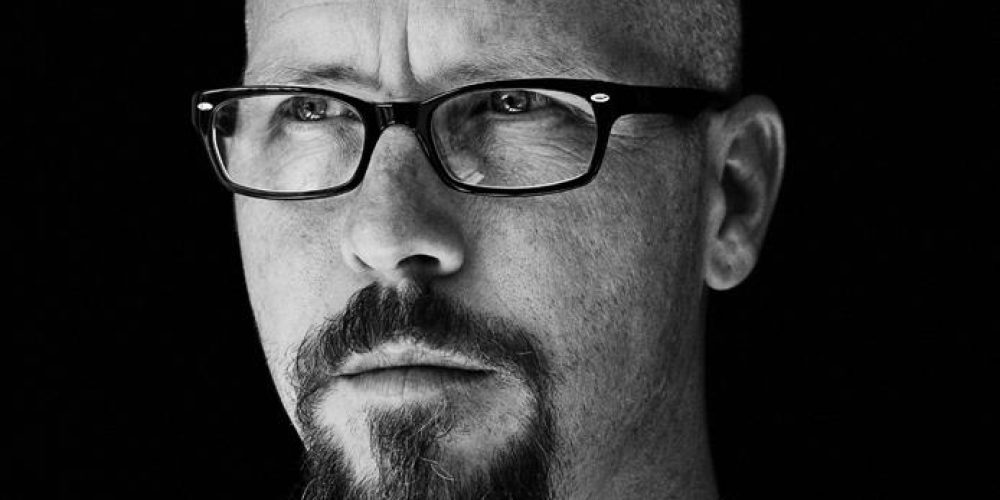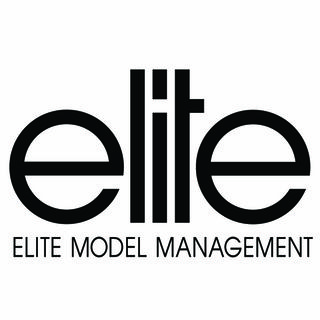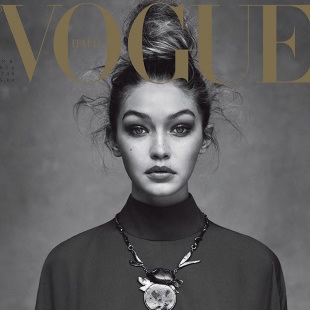Robert Gaudette has established himself in the Toronto market as one of the most talented test photographers around. He sat down with The Business Model to talk about development, diversity, and what the future of the industry looks like in Toronto and beyond.
The Business Model: What was your first encounter with the modelling industry?
Robert Gaudette: Well, I used to shoot freestyle motocross and during 2006-2007 I was introduced to a model, Nicole and we took a few pictures. I met with her agent, Chantale Nadeau, and after some help and guidance she began sending me models to shoot. So, by coincidence, I began to transition from shooting motocross to shooting models. I’ve stayed in that pocket of model testing, because I consider myself to be more of a portrait photographer than a fashion photographer. So it’s been a nice match.
TBM: Can you describe what the relationship between a model and photographer is like?
RG: When a photographer and a model come together, you have a specific goal to meet in the short term. Unless you stay in touch, you have limited interaction with each other beyond the job because the next week you’re working with someone else. But, thanks to social media, I get to follow what people are doing. After you develop a relationship with a model, you get to hear about where they’re satisfied and dissatisfied in their representation and their careers. It’s not like models show up and complain, but as you get to know people, you develop an insight. On the other side, I’ve gained an entirely new perspective from working closely on model development. Even just from the standpoint of building books. You get to see how much is asked of models on creatives that don’t necessarily help their books. When a photographer, stylist, and make-up artist get together for a creative shoot, they generally have a concept in mind and cast models that best suit their vision. That won’t necessarily be based on what’s beneficial to the models image/book. So I’ve learned how difficult it can be for models to find the right match ups. In the beginning they can be fun and give the model experience on set but after a while it can wear them out if they aren’t getting the right images back in return.
TBM: So do you think this makes you better as a photographer?
RG: I think so. Because now I know when I’m wasting someone’s time. Even if something’s being submitted to a magazine, I understand the limitations of that. It’s not like your photos get published and then the phone rings. No, those photos go in the model’s book and it’s their responsibility to market the content of their book.
TBM: So, as a photographer, a model or their booker wouldn’t have told you that kind of stuff to begin with?
RG: Not really on a creative. If you’re testing, then yes, you’re being guided because you’ve been hired. There’s not as much testing going on anymore because there are so many great new photographers shooting creatively (for free) and from an agencies point of view, it can get expensive for models to build a book primarily on testing. So people now rely more heavily on creative shoots to build books. The drawback is that creative’s aren’t being shot with the model’s interests in mind. It’s a collaboration to create a great editorial, and it’s not designed to meet any single person’s individual needs. It’s about the “story”. Tear sheets are great, but if they’re not the kind of tears that’ll show you at your best to clients, then it can be a wasted effort — except for networking, experience, making contacts, which are all still important. Also, in this market, I feel like being a photographer is a lot like being a model. I understand the limitations of our market, the struggles of making a living, and I’ve experienced that. It’s very easy for a model to fall into a pattern of being asked to do a lot of free things. After a while a model has to manage that and learn what’s in their interest because at the end of the day, you have pay your bills.
TBM: What makes a model good at their job?
RG: Well I think there are fundamentals that you must have. I think model is a verb first. You have to look a certain way and fit clothes, etc. then you need to be able to take direction. Those are just standards, like model 101. Beyond that, a great editorial model can interject herself into the process. She takes the direction, but then elevates the project with his/her interpretation and performance. If a model is also a contributing artist in the process, then that’s amazing. That’s what defines the great ones. Personality. That’s why Agyness Deyn, or Cara Delevigne have done what they’ve done. As a photographer, you photograph their performance. I would pick performance over look any day.
TBM: How does working with male model compare with working with female models?
RG: The work available for male models is much more limited and there are very different expectations. There are fewer opportunities for male models to do very editorial work, for example. If you have a super handsome, all-American look, I’m not going to ask you to do emotional or edgy editorial poses. It’s just not going to work. And there are a few exceptions to that but it’s rare. So men rely more heavily on aesthetics and I think that’s a shame. With females, it’s wide open. You’re free in terms performance and expression.
TBM: What about commercial vs. editorial models?
RG: I think ideally, you want to be both. You want to be Barbara Palvin or Natalia Vodianova. Editorials are where the prestige is. But the truth of the matter is, that’s not typically where the money is. It’s the kind of stuff that you do because you love it and it’s going to help sell you to clients. For markets like Toronto or Asia, having a more commercial look will probably keep you busier and more consistently paid.
TBM: Lack of diversity (in terms of ethnicity, measurements, and age) in modelling is often attributed by agents to photographers or clients, saying that they only want to hire white, thin, young models. Clients and photographers will often say the opposite: that agents only send them models who are white, thin, and young. As someone with experience as a photographer and agent, what is your take on where the problem lays?
RG: The root of the problem is money. It’s one of two things: either the consumers purchase more when they see young, skinny, Caucasian models or that isn’t true and it’s a myth. Certain brands are definitely targeting specific consumer bases and unfortunately they believe (or have empirical evidence) that it works. So we have to educate and move consumers to accept more diversity over time. Even in Asia, they import white models, because their consumers are buying America. I think customers need to respond by saying that if there are black Abercrombie models playing on the beach with the white models, I’m still going to buy your shorts (even more likely to). But money is the driving factor. I think consumers need to be more vocal and change their purchasing habits until there’s some change.
TBM: How do you make casting choices?
RG: As a photographer, if I’m casting for myself, there are definitely certain traits I look for, I want somebody who can power through and deliver an emotional performance. So whether you’re 98 pounds or 200 pounds, I don’t really care. But that’s my personal preference and probably not typical in the industry.
TBM: Models like Adrianne Ho are creating a buzz in the industry because of their strong and healthy bodies. Do you think there is a current trend in fashion that is veering away from straight and plus-sizes and towards the embracing of a healthier middle ground?
RG: Right now, people in general seem to want to go in the right direction. Plus-size models are doing work they’ve never done before, and can be very editorial. Crystal Renn has changed the face of it all. I think social media helps it along too because you don’t have to rely on traditional media to speak about things that might not line up with their advertisers. I think with a perceived demand from the people, the trend towards health is stronger than it has been in a long time. Outside of the industry, people are more conscious of healthy eating than ever before. In the end, that’s the consumer clients are increasingly selling to. The Dove campaigns are a corporate response to a consumer demand. In terms of body image I think that instead of identifying with one kind of beauty and narrowing the definition solely to that, we should appreciate all kinds and not let them diminish each other.
TBM: How do you think the closure of Ford Canada has or will affect the Toronto market?
RG: I think because all the great people from there are still working in Toronto, we didn’t lose any of those talents. From the outside, it undermines a lot of our international credibility. So maybe it looks like there’s trouble here, where there isn’t necessarily. It’s always been a tough market, but it’s been consistently tough and stable.
TBM: After working with so many models over the years in the city, what types of models have you found work best in the Toronto market?
It should be an obvious answer, but it isn’t. I think it has a lot to do with personality. What seems to separate the beautiful people from the beautiful people you see everywhere, is their personality and work ethic. Some of it has a lot to do with tight social circles and good relationships. Once teams love to work with you, you’re more likely to get return bookings and that kind of snowballs. I can’t pin down a specific type or look. It’s definitively more commercial than editorial. But commercial has gotten a bad rap and is far more than simply catalogue. It means that what you’re doing is designed to specifically meet consumers’ eyes. If you can do Sears, the Bay, and lingerie, you will be okay in Toronto.







Comments 0